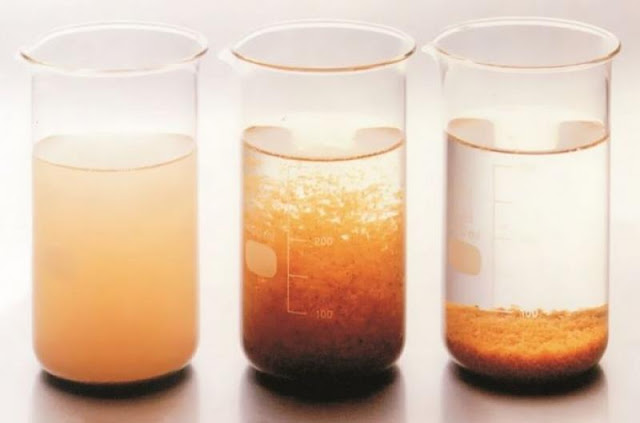Understanding the Importance of Flocculants and Coagulants in Water Treatment
 |
| Flocculants and Coagulants |
Two classes of chemicals,
flocculants and coagulants, are frequently employed in the water treatment
process to remove pollutants and enhance water quality. Both chemicals are crucial
to the process of treating water, but their modes of operation and the kinds of
particles they may eliminate from the water are different.
Chemicals called flocculants are
added to water to speed up the flocculation process. Small particles floating
in water are brought together during flocculation to produce bigger particles
known as flocs. By balancing the negative charges on particles' surfaces,
flocculants cause the particles to cluster closer together and create flocs.
The flocs eventually develop and sink to the bottom of the treatment tank,
where they are simple to remove. In order to remove suspended particles from
water, such dirt, clay, and organic matter, flocculants are frequently
utilised.
Coagulants, on the other hand,
are chemicals that are added to water to destabilize particles and promote
their aggregation. Coagulants work by neutralizing the negative charges on the
surface of particles, causing them to come together and form larger clumps,
called coagulates. The coagulates are then removed from the water by
sedimentation or filtration. Coagulants are commonly used to remove turbidity, colour,
and microorganisms from water.
A variety of flocculants
and coagulants are available, each with unique benefits and drawbacks.
Synthetic polymers, natural polymers, and inorganic flocculants are a few
examples of prevalent types of flocculants. Because they are so good at
filtering out particles from water, synthetic polymers are frequently employed
in industrial applications. Due to their biodegradability and environmental
friendliness, natural polymers like chitosan and alginate are often employed in
the food processing and wastewater treatment industries. Municipal water
treatment facilities frequently utilise inorganic flocculants like alum and
ferric chloride because they are good at eliminating suspended particles and
turbidity.
Coagulants are typically
classified into two categories: organic coagulants and inorganic coagulants.
Organic coagulants, such as polyamines and polyDADMAC, are commonly used in
industrial wastewater treatment because they are highly effective at removing
organic matter and color from water. Inorganic coagulants, such as aluminum
sulfate and ferric chloride, are commonly used in municipal water treatment
because they are effective at removing turbidity and suspended solids.
Flocculants and coagulants are
two types of chemicals that are commonly used in the process of water treatment
to remove impurities and improve water quality. While both chemicals work by
neutralizing the negative charges on the surface of particles, they differ in
their mechanism of action and the type of particles they can remove from water.
The choice of flocculant or coagulant depends on the specific water treatment
application and the type of impurities that need to be removed.



Comments
Post a Comment